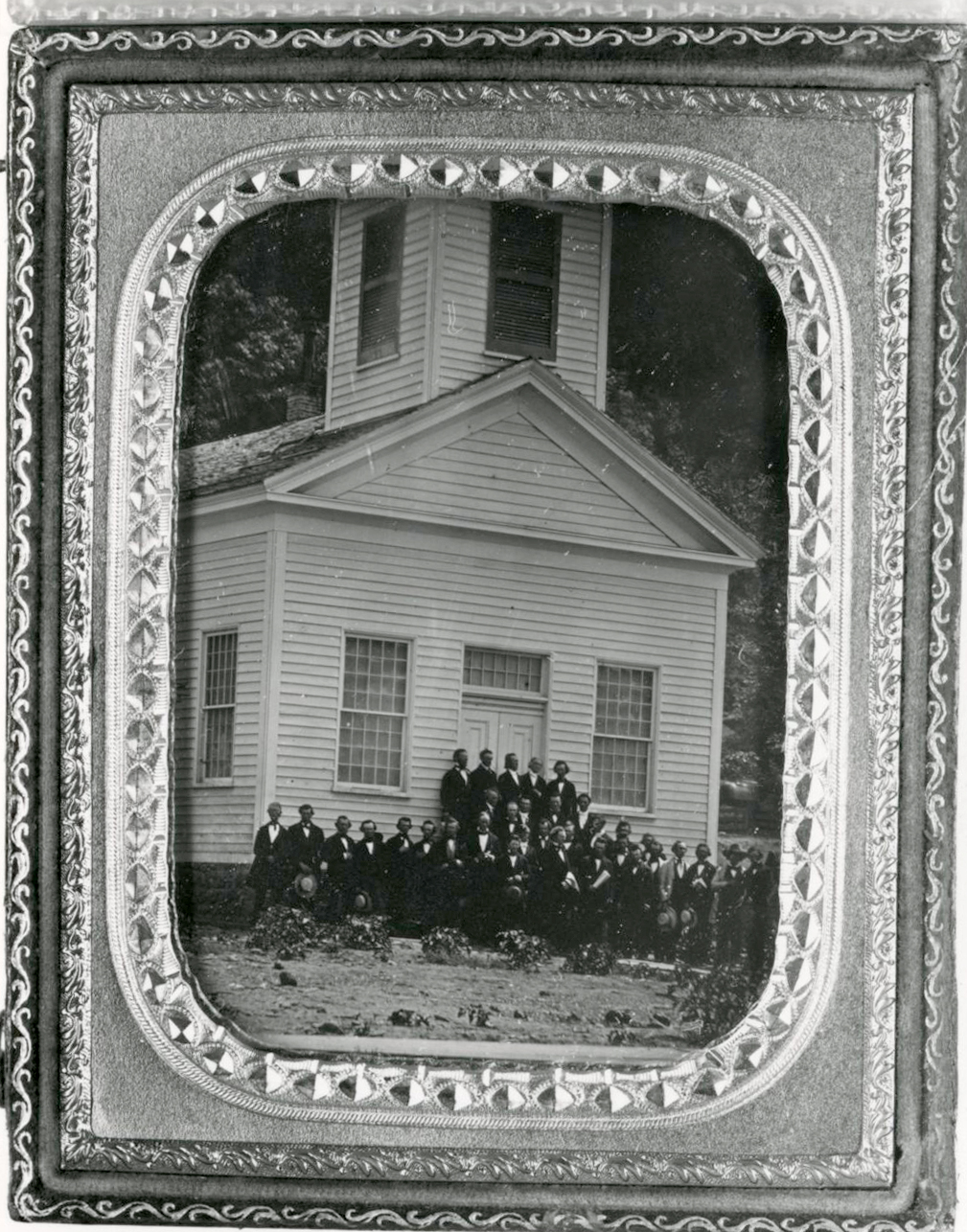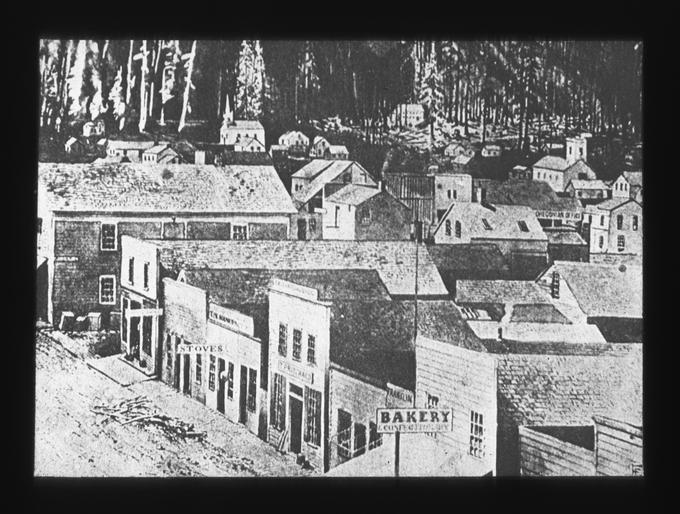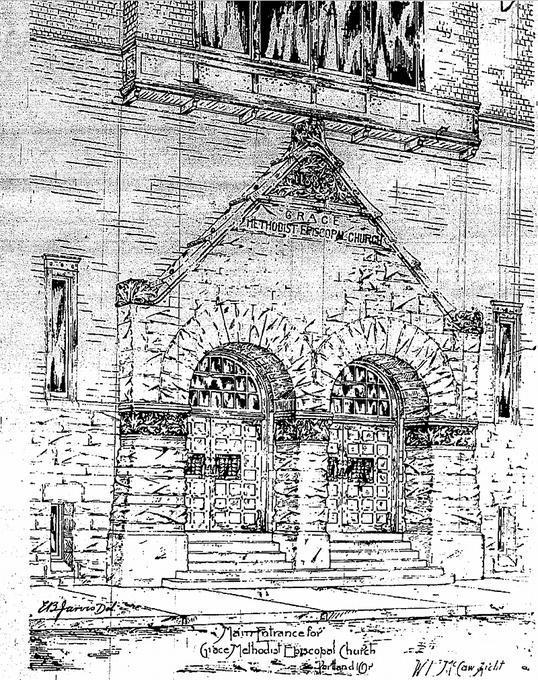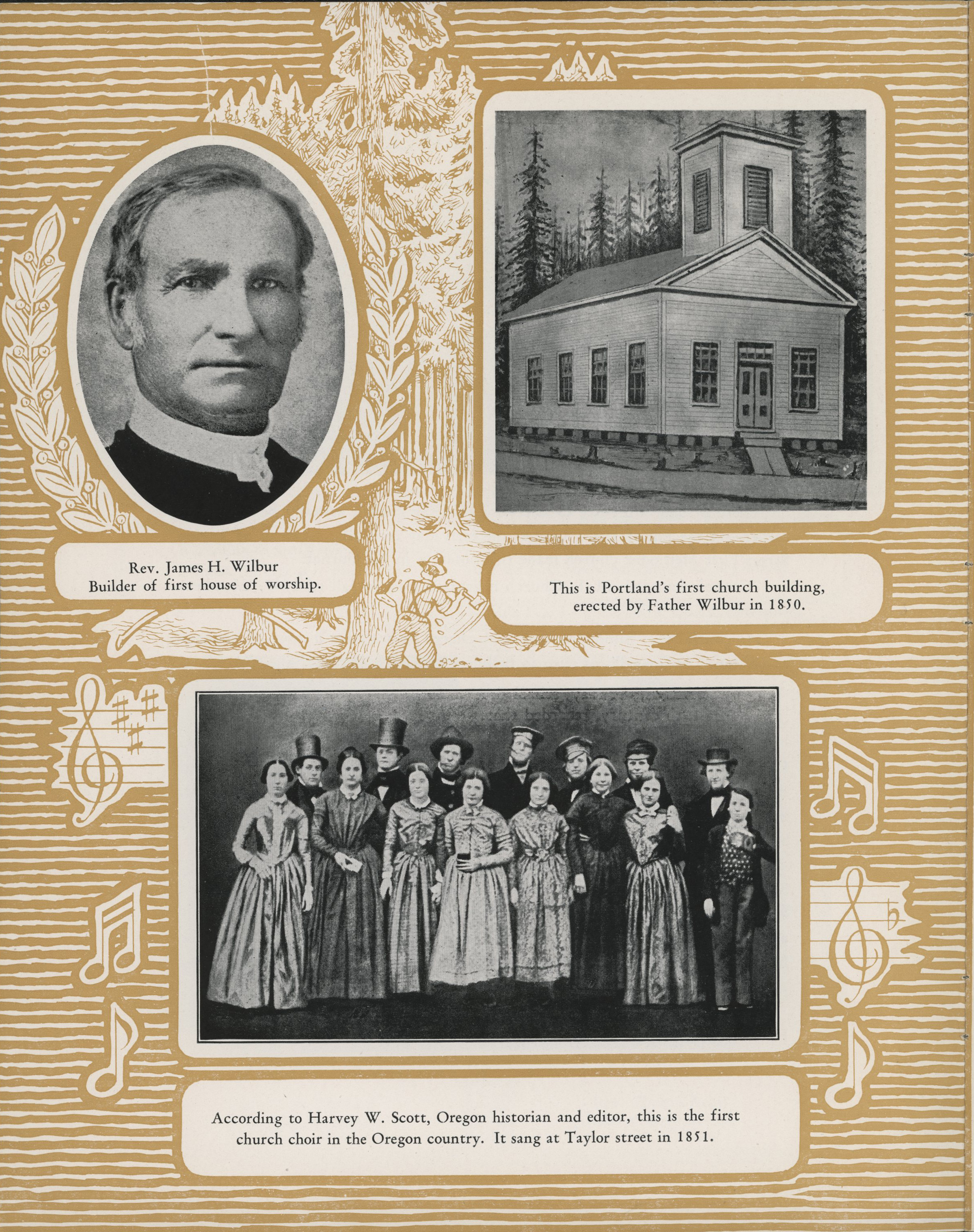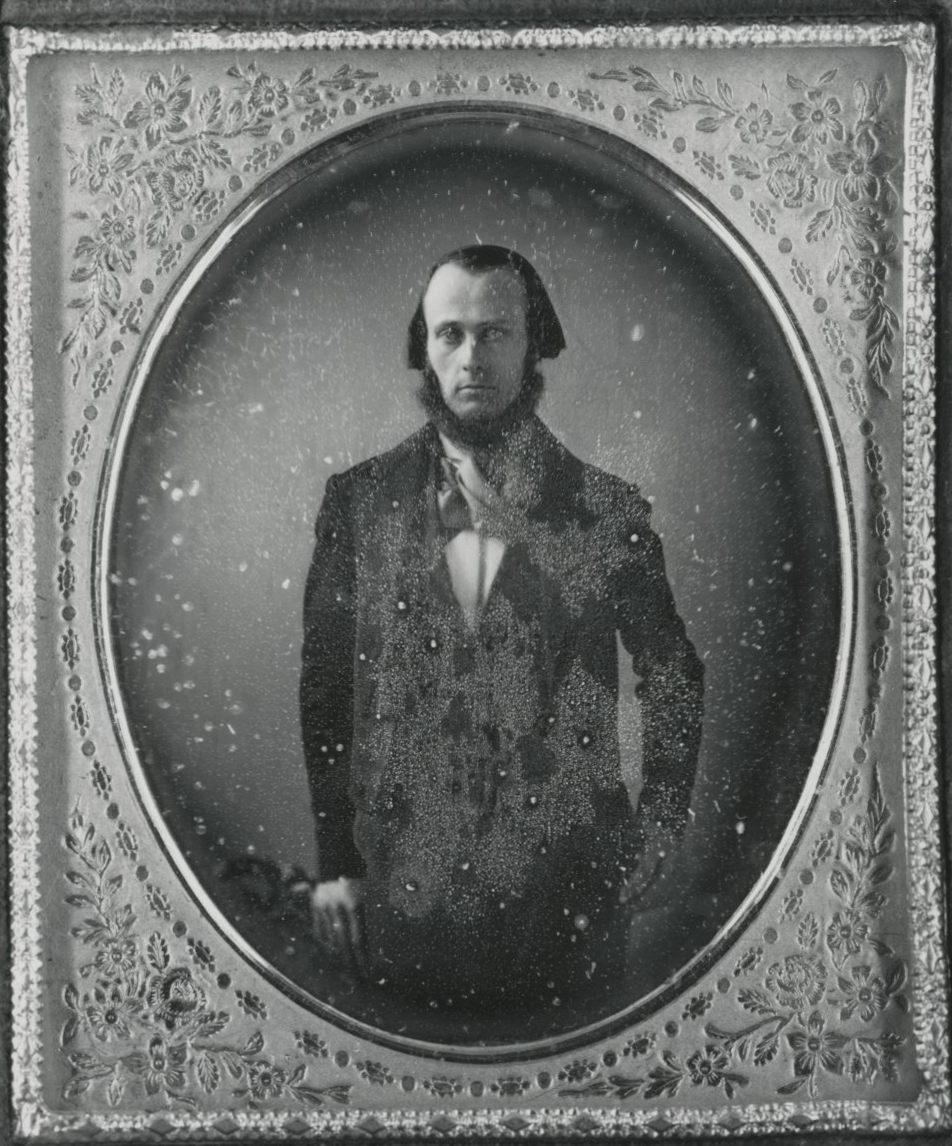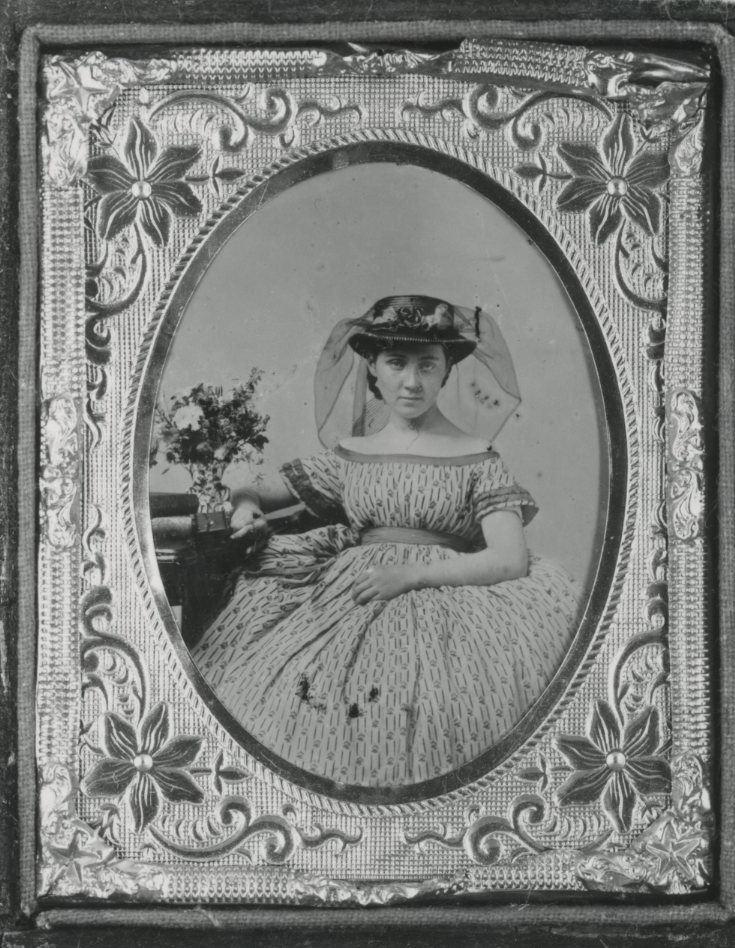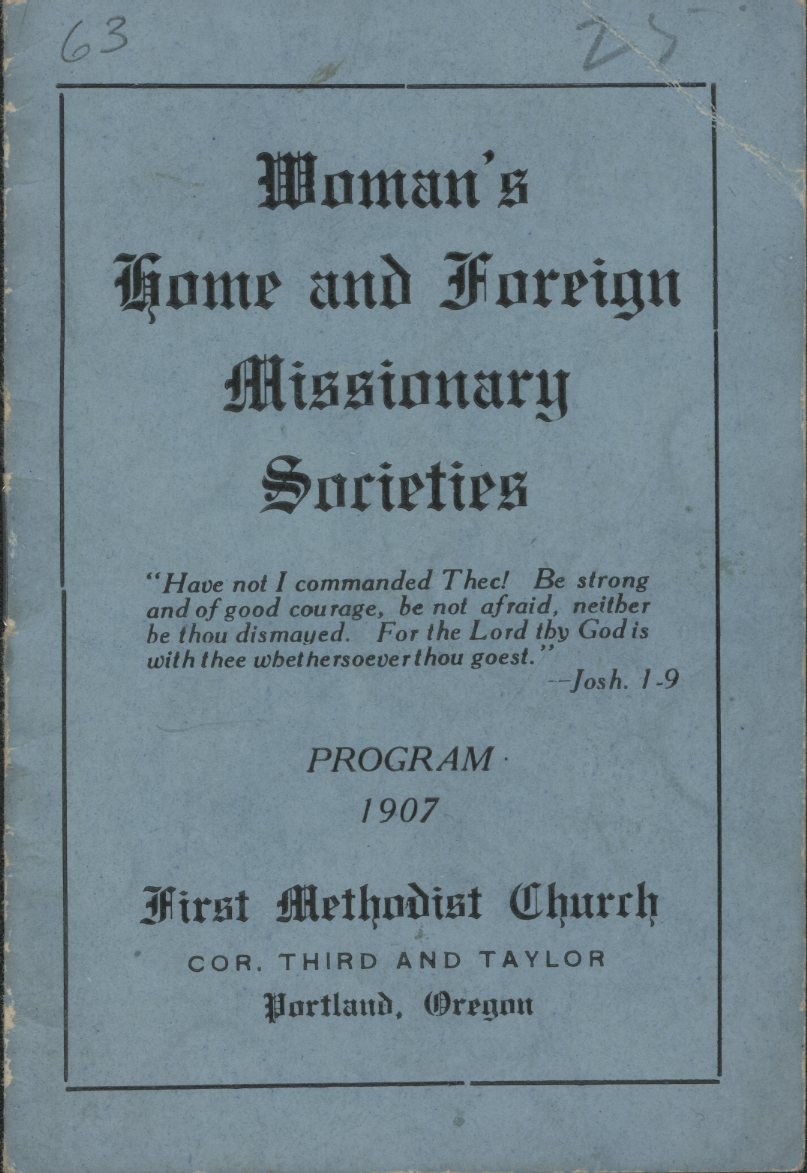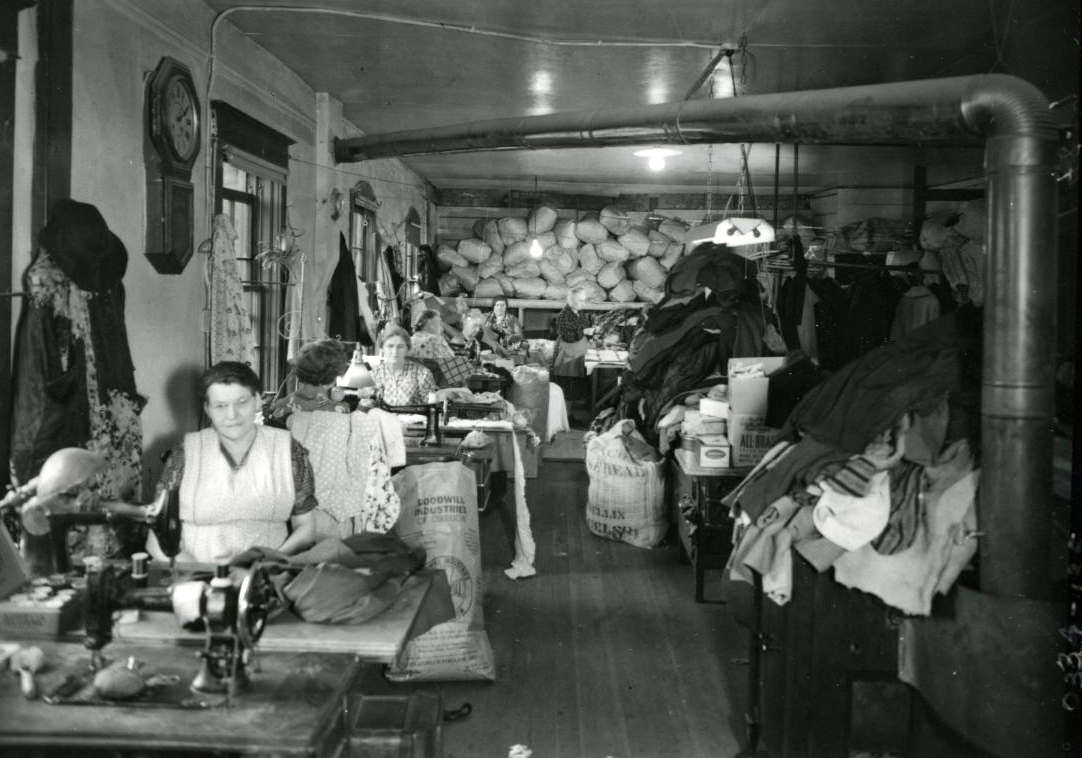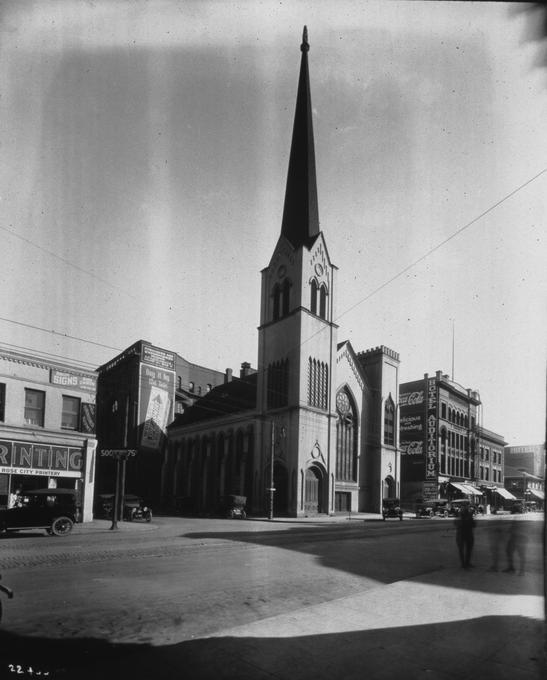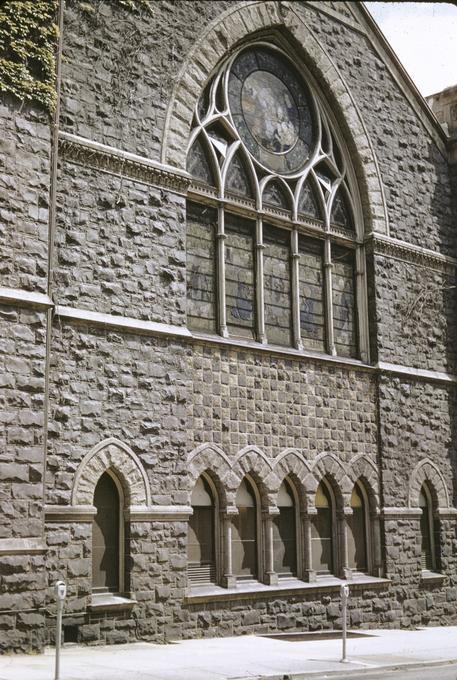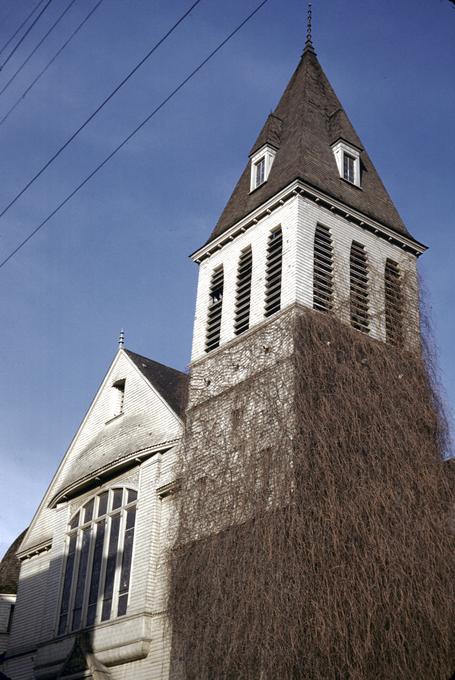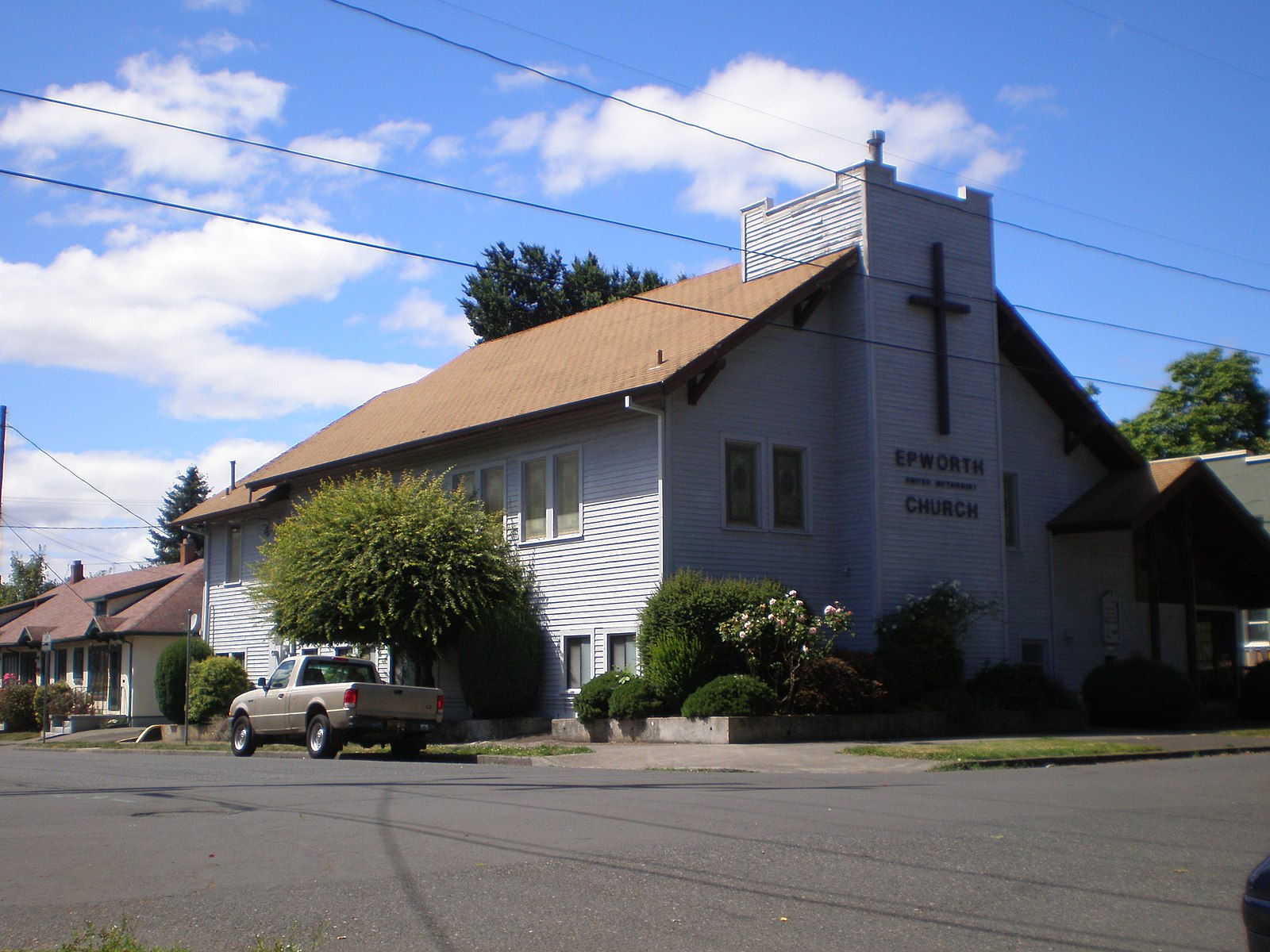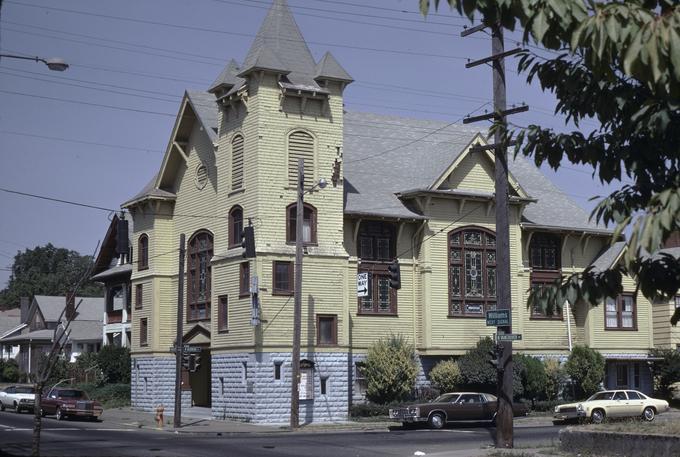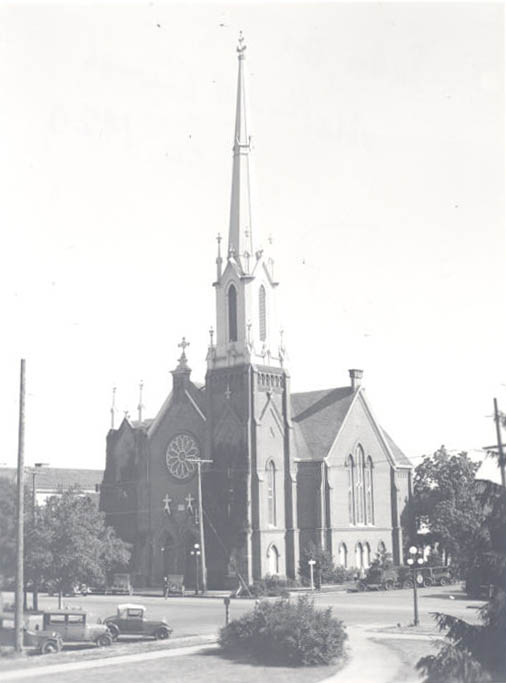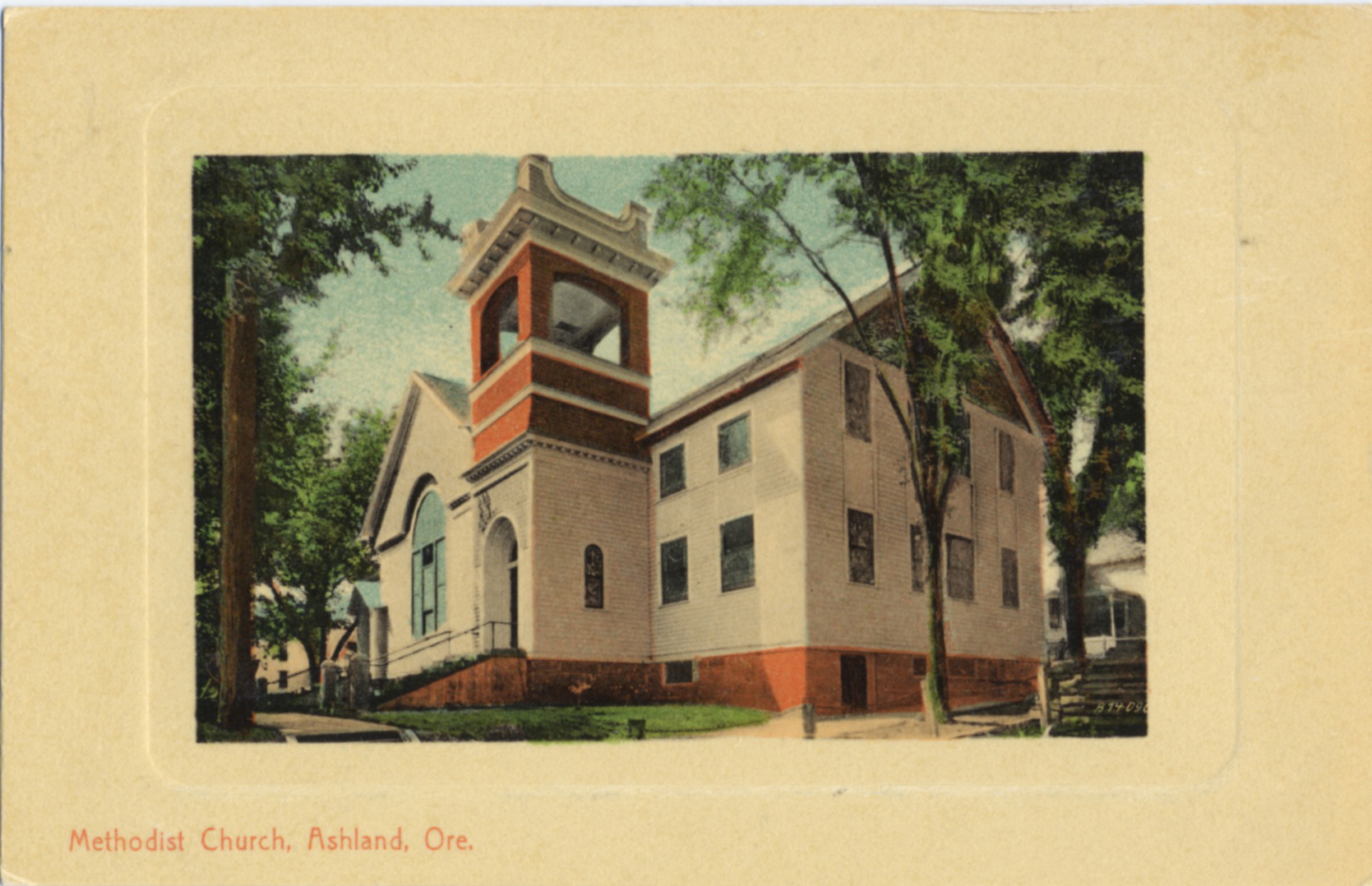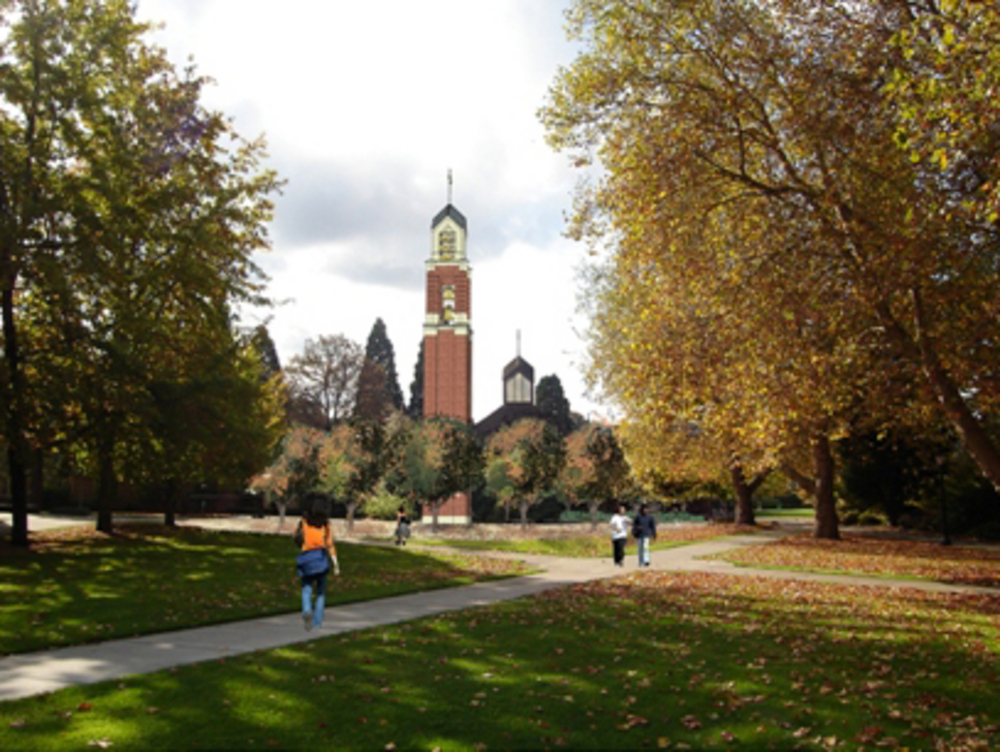Methodist Episcopal Church, Portland's first church, began with seven members in 1848, and by 1960 it had grown into a forward-thinking congregation of 1,833 members. The congregation's first building, constructed in 1850, was on Southwest Second and Taylor. Under pastor Charles C. Stratton, the church prospered and built its second building in 1867 on Southwest Taylor and Third, an English gothic structure that could seat eight hundred people. In 1884, Methodist Episcopal spun off a new congregation, Grace Methodist Episcopal, and Rev. George Izer served as pastor of both churches for a few months. The two congregations reunited in 1912 as First Methodist Episcopal in Grace's newer building on Southwest Twelfth and Taylor.
In 1957, now known simply as First Methodist, the church moved to its current four-acre campus on Southwest Eighteenth Street and Jefferson, where five buildings were constructed. Architects Donald Stewart and Kenneth Richardson designed five buildings, which were constructed using Northwest materials exclusively, including laminated arches, fir siding, and a slate roof. The value of the land and buildings was $875,000. The sanctuary holds nine hundred people, and its stained glass window is the largest of its kind in the Northwest. The seventy-five-foot, forty-ton tower houses Portland's oldest bell, cast in 1850 at Meneely's Foundry in Troy, New York, and purchased by Methodist Episcopal. After uniting nationally with the Evangelical United Brethren Church in 1968, the church changed its name to First United Methodist.
In general, First Methodist has been moderate-progressive in orientation, both sociologically and theologically. Pastor James H. Wilbur established Portland Academy in 1851, Portland's first high school (private), bounded by present-day Southwest Broadway and Park Avenue and Jefferson and Columbia Streets. For thirty years, the school was "one of the most important educational institutions in the state," according to historian Harvey K. Hines. When it was closed in 1881, the sale helped fund the relocation of Willamette University's medical education program to Portland.
Portland-area Methodist congregations founded Portland University in 1891. Its first president was C.C. Stratton, who had been pastor at First Methodist Church, president of the University of the Pacific on the College Park campus in San Jose, and president of Mills College. Within two years, the university had 541 students; but when the institution experienced financial problems, it merged with Willamette University in Salem in 1900. Willamette sold the Portland assets to the Catholic archdiocese, which established Columbia University (now the University of Portland) on the site in 1901, and Portland University's substantial building remains in use as Administration Hall.
In the first decade of the twentieth century, Theodore Roosevelt was president of the United States, and progressive reform was in the air. Following the Methodist Federation for Social Service, Portland's First Church adopted a social creed in 1908, specifying that the last Sunday of each month be known as Social Service Sunday. The church added a Ladies' Social Union and a Ladies' Aid Society and established a Seaman's Bethel, where layman William S. Fletcher led a fight to outlaw the shanghaiing of sailors. In 1916, the church added a Social Service Temple, a three-story building open every day as a refuge for young people, with classrooms for children and adults and church offices. For forty years, Fletcher was one of the congregation's leaders in progressive innovations and social reform.
First Church clergy and members were predominantly liberal evangelicals, open to science and the historical and literary interpretation of the Bible. With a membership of 1,350, the church was among the largest founding members of the Portland Council of Churches in 1919 (today's Ecumenical Ministries of Oregon). Pastor Clarence True Wilson became a national leader in the woman suffrage movement, and First Methodist led in the establishment of the Portland Goodwill Industries in the 1920s.
Fueled by World War II jobs, a surge of workers moved into Portland, and the African American population rose to 22,000. First Church helped establish Hughes Memorial Methodist Church for Black parishioners on Northeast Failing Street in 1945 and supported it with monthly donations to its pastor’s salary for forty years.
One of First Church’s pastors, Raymond E. Balcomb, was president of the Oregon branch of the American Civil Liberties Union in the 1960s. About thirty years later, First United Methodist was among the first churches to become "reconciling congregations" committed to work toward full participation of all races, abilities, classes, ages, and welcoming LBGTQ members. First Church members and clergy have marched in the annual Gay Pride Parade for years.
The church opened the Goose Hollow Family Shelter in 1994, providing private sleeping spaces and other services to homeless people. The congregation also financially supports the Oregon Food Bank and the Macdonald Center, a 54-unit assisted living facility in Old Town/Chinatown, opened in 1999.
After years of declining membership, First Methodist had grown to almost nine hundred members by 2016. The church completed a $1.5 million capital renovation project that included the installation of a video wall and improved the environmental impact of the plant.
Built around its 40-rank Wicks pipe organ and antiphonal, the music programs at First Methodist are well known. Lauren B. Sykes served twice as organist-music director (in the early 1940s and again in 1957-1970), and Jonas Nordwall has been the organist since 1971. The sanctuary is a popular venue for performances by local and traveling orchestras and choirs.
-
![]()
Men attending the 3rd annual Methodist Conference, Portland, 1855.
Courtesy Oregon Hist. Soc. Research Lib., OrHi638A
-
![]()
Portland, 1854; building with the square cupola is early Taylor Street Methodist Church.
Courtesy Oregon State University Libraries
-
![]()
Architectural plans sketch of Grace ME Church, SE 10th and Taylor, 1888.
Courtesy University of Oregon Libraries, pna_20299
-
![]()
Church pamphlet, 1948, showing Rev. James H. Wilbur, first church building, and the church choir from 1851.
Courtesy Oregon Hist. Soc. Research Lib., Pam 287.67911
-
![]()
Rev. William Scott Lewis, c.1851.
Courtesy Oregon Hist. Soc. Research Lib., 015877
-
![]()
Icilia May Anderson, 1857.
Courtesy Oregon Hist. Soc. Research Lib., 017425
-
![]()
Women's Home and Foreign Missionary Societies pamphlet, 1907, cover.
Courtesy Oregon Hist. Soc. Research Lib., Mss63, box 5, folder 4
-
![]()
Goodwill Industries, Portland.
Courtesy Oregon Hist. Soc. Research Lib., 0034A135
-
![]()
First Methodist Episcopal Church, Portland, Southeast Third and Taylor.
Courtesy University of Oregon Libraries, pna_06279
-
![]()
First ME Church, SE 12th and Taylor.
Courtesy University of Oregon Libraries, pna_06219
-
![]()
First Methodist Episcopal Church, Portland.
Courtesy University of Oregon Libraries, pna_06204
Documents
Related Entries
-
![Epworth United Methodist Church (Portland)]()
Epworth United Methodist Church (Portland)
From its beginnings as a mission in the late 1890s, Epworth United Meth…
-
![First African Methodist Episcopal Zion Church]()
First African Methodist Episcopal Zion Church
First African Methodist Episcopal Zion is Portland's oldest African Ame…
-
![First Methodist Church (Salem)]()
First Methodist Church (Salem)
Founded in 1841 by Jason Lee and members of the Methodist Episcopal Chu…
-
![First United Methodist Church of Ashland]()
First United Methodist Church of Ashland
The First United Methodist Church was the first permanent church buildi…
-
![University of Portland]()
University of Portland
"Founded on a bluff and run on that principle," as historian Jim Covert…
Map This on the Oregon History WayFinder
The Oregon History Wayfinder is an interactive map that identifies significant places, people, and events in Oregon history.
Further Reading
Balcomb, Raymond E. Portland's First Church: The Sesquicentennial History. Portland, Ore.: First United Methodist Church, 1994.
Corning, Howard M., ed. Dictionary of Oregon History. Portland, Ore.: Binfords & Mort Pub., 1956.
Hines, Harvey K. An Illustrated History of the State of Oregon. Chicago, Ill.: Lewis Pub. Co., 1893.
The Oregon-Idaho Annual Conference Journals. Online.
Yarnes, Thomas D. A History of Oregon Methodism. Nashville, Tenn.: The Parthenon Press, 1957.



